You stare at your ever-expanding to-do list. It stares back at you, daring you to cross off an item — except you don’t know where to start.
Logically, you’d start at the top, right? But the fifth item is due tomorrow, and the 12th item is so massive you’d need another month (at the very least) to pull it off.
Oh boy, now you're in way over your head.
That’s where the “eat the frog” time management technique comes in. It might not sound appealing, but it can help you better prioritize your key tasks so you no longer have to stare at your list with dread.
Let’s dive in and do away with that dread.
Using the “eat the frog” time management technique as a small business owner
As a small business owner, there are many things you have to take care of that you may not be able to outsource or delegate to someone else, unlike owners of bigger companies. This is especially true if your employees report directly to you and there are no “middle” or line managers.
That’s where the “eat the frog” time management technique comes in. This methodology helps teams and bosses prioritize their most important tasks of the day.
Inventor of the technique, Brian Tracy, named it after a quote often attributed to Mark Twain — “Eat a live frog first thing in the morning and nothing worse will happen to you the rest of the day.”
The “eat the frog” technique is especially helpful for anyone who feels overwhelmed by the number of things they have to do, overthinkers and procrastinators, or those who just want to get better at planning or prioritizing.
By using the “eat the frog” method, you can plan out your day’s tasks in order of priority without overwhelming yourself. Ultimately, you’ll get more done in less time — or, even better, the most valuable things done at the right time (all without wasting time)
How does “eating the frog” work?
According to Brian Tracy’s book, the “eat the frog” method can be broken down into four general categories — seeking clarity, planning in advance, applying the 80/20 rule, and being aware of the consequences.
Here’s how they work:
First: Be clear about what you want
In order to find your frog, you need to be clear about what you truly want.
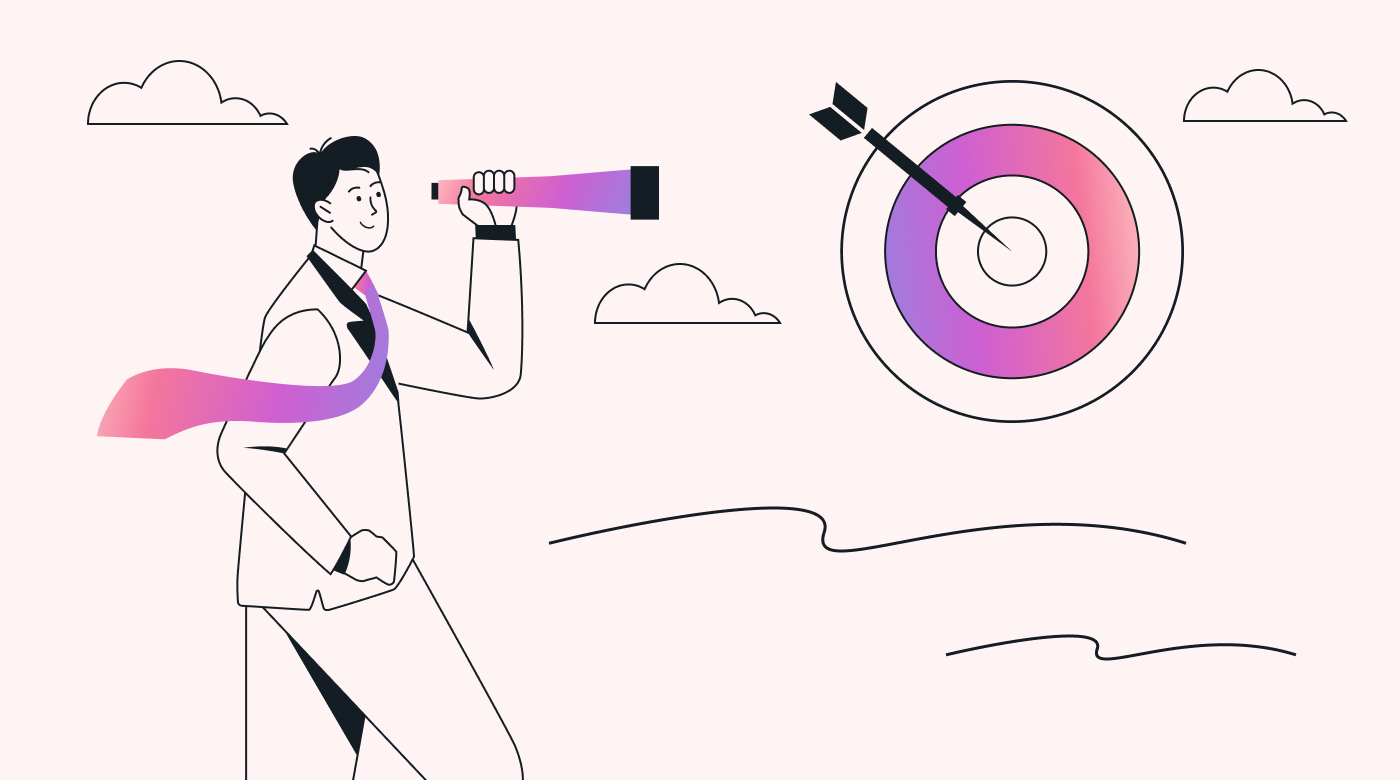 |
Because you don’t have nearly as many resources as the big players do, you must direct what limited resources you do have toward the things that really count.
Being clear about your business goals and objectives not only helps you make this decision easier, but you’ll also get more bang for your buck — as long as you’re really strategic about it.
Clarity also helps overcome procrastination, which is good news considering that 88% of the workforce admits they procrastinate for at least an hour a day. While that might be a drop in the ocean for larger organizations, having 88% of your client-facing workforce procrastinate for at least an hour can cost you dearly — in lost clients, time, and profits.
So how do you bring clarity to your business?
Think long and hard about what your key goals are or what you want to achieve. Then, write these things down on paper.
Next: Plan your day in advance
Spending 10–12 minutes planning your day in advance can save you two hours each day, according to Brian Tracy.
This is called the 10/90 rule, which states that the first 10% of time spent planning your day can save you 90% of the time you need to get your work done.
But don’t plan too far ahead since it’s often difficult to accurately predict how much time you’ll spend on future tasks.
For instance, we tend to overestimate how much we can get done in the future, so we might take on more than we can handle — and find ourselves quickly falling behind as a result. This is called the Planning Fallacy, a concept coined by Daniel Kahneman in and Amos Tversky in 1977.
Plan your day the night before at the very latest. That way, you’ll know exactly what you’ll be doing when you wake up.
Then: Apply the 80/20 rule
The 80/20 rule, or Pareto’s Principle, says that 80% of your results come from just 20% of your efforts. This rule is especially applicable to small businesses, as your efforts can determine whether you remain profitable or sink into a sea of debt.
Find the most important task you need to do today or the task that’ll have the most significant impact. This is your frog. In other words, you may not want to do it — but by eating it (or accomplishing it), you’ll make the most significant impact.
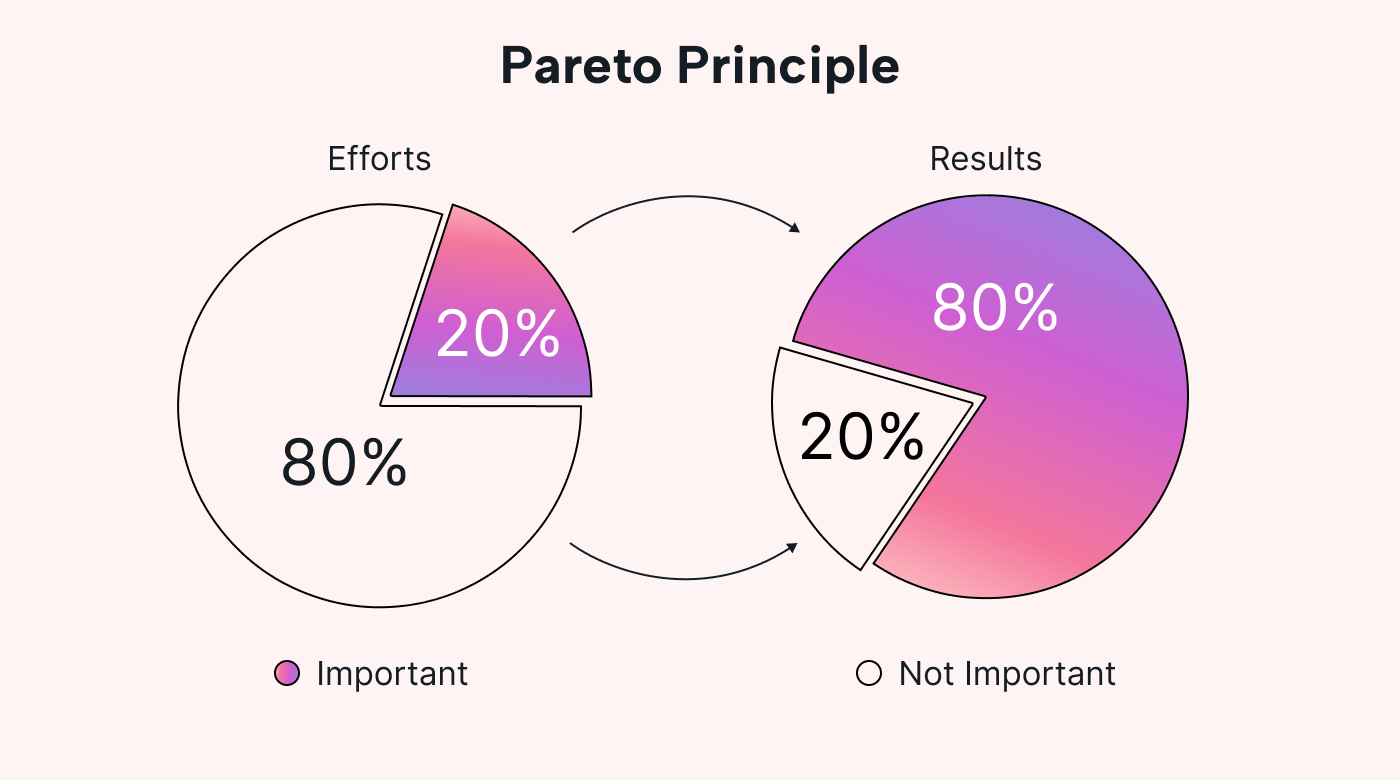 |
Brian Tracy also recommends spending an extra 20% of your time on your most important tasks instead of setting deadlines for everything. This guarantees you’ll focus on your frog and do it really well rather than panicking over deadlines.
Finally: Be aware of the consequences
This ties into the first category of seeking clarity. After all, if you know what you want to achieve, especially in the long term, the consequences of not taking action will become abundantly clear to you.
Small businesses, as mentioned above, have fewer resources to spend than big conglomerates. That means the consequences for not prioritizing — or prioritizing incorrectly — are bigger for you than for organizations that can better afford to cushion the blow.
How to eat the frog as a small business owner
Eating the frog is pretty easy to do, which is why it’s so effective for so many people. Here’s how to get started:
Step 1: Find your frog
In order to eat the frog, you have to find it. You can do this by prioritizing your tasks.
There are many ways to prioritize your own tasks as well as those of your team. You can sort them by either deadline or impact.
Brian Tracy recommends setting a goal, setting a deadline for it, and then making a list of all the tasks you need to do in order to achieve it. After making the list, reorganize your tasks in order of priority. The first things on your list will be your frogs. Do them first!
You can also use the Eisenhower Matrix to prioritize your tasks. Everything in the “important and urgent” quadrant will be your frogs.
What’s considered a “frog”?
What if you’ve written out your list of tasks and still have trouble finding your frogs? Don’t worry; we’ve got you covered.
A frog is the biggest and most major task you have on your plate. As mentioned above, it’s usually the first thing on your list (after you’ve prioritized it) or the items under the “important and urgent” box in the Eisenhower Matrix. Frogs are usually complex tasks that move you closer to your goal or company KPIs.
How else can you tell if a task is a frog?
Consider how it makes you feel. For example, maybe it’s unpleasant, it brings you a lot of resistance, or you procrastinate on it. Heck, maybe just thinking about it stresses you out.
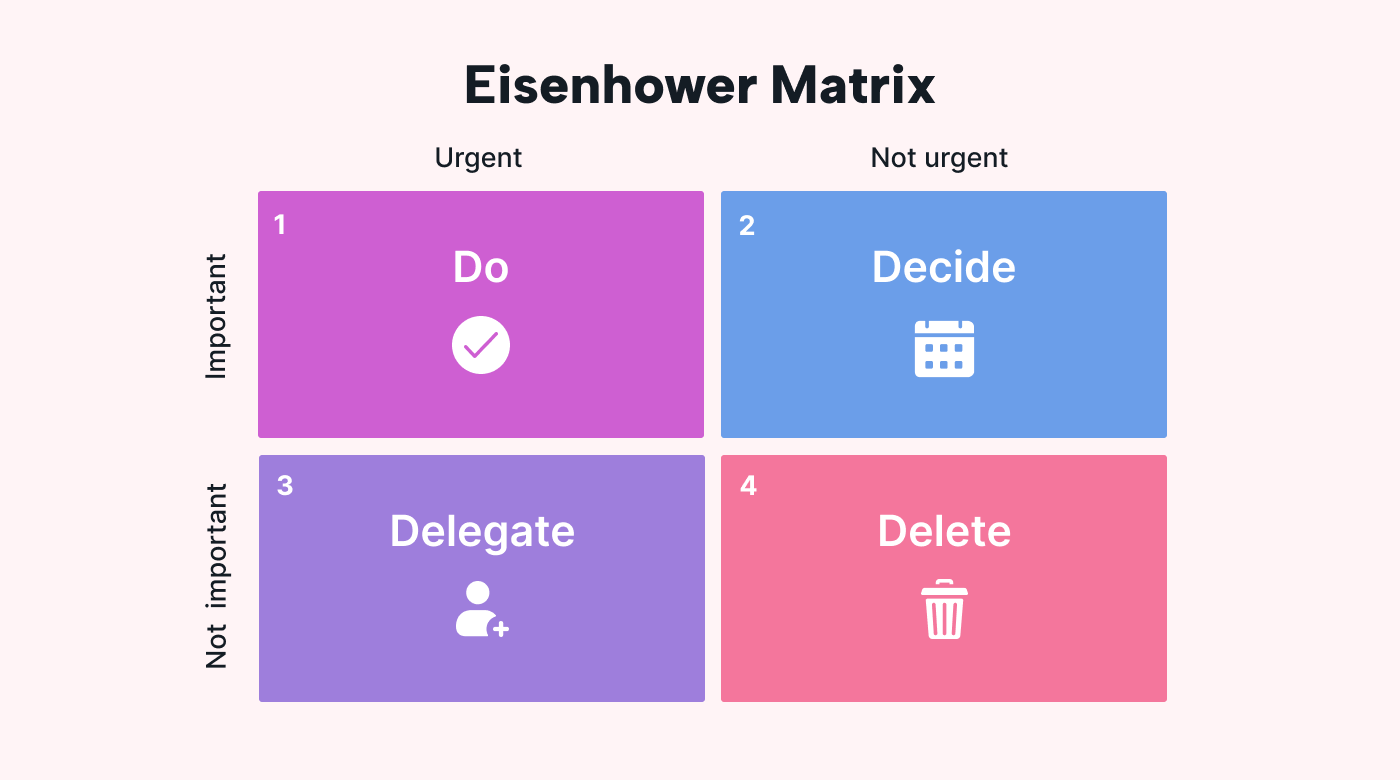 |
If emails and other low-value tasks get in the way of your frogs, try blocking out a chunk of your time to deal with them specifically. Motion’s intelligent calendar can help with that.
Frogs also take more time to eat.
The perfect frog task takes between one and four hours to accomplish because it requires extra care and effort. It’s a bit like painting a masterpiece versus doodling a stick figure. It’d be surprising if someone spent more than an hour on stick figures, but masterpieces need the complete focus of the artist.
That’s why Tracy recommends spending an extra 20% of your time on frogs.
Step 2: Eat the frog
After you find your frogs, it’s time to eat them.
Here’s another quote (mis)attributed to Twain: “If it’s your job to eat a frog, it’s best to do it first thing in the morning. And if it’s your job to eat two frogs, it’s best to eat the biggest one first.”
Basically, eat your biggest frog first, and eat it in the morning. Your biggest frog is the most important task you have looming over your shoulder. It’s the one that’ll have the biggest impact on getting you close to your goal.
Eat your frogs first thing in the morning or whenever you and your team have the most energy. While most office workers are most productive at around 10:20 in the morning, that might not be the case for you or your team. In that case, eat your frog at your most productive time, and schedule frog tasks for your team during their best hours as well.
If your frog is too big to eat in one setting (i.e., it takes more than four hours to complete it), cut it up into smaller chunks. The first thing on your list will be your new frog.
For instance, let’s say your frog is to sign up 2x more members to your gym. Since this task will take you more than four hours to do, you can separate it into the following stages:
- Customer research
- Testing the research
- Market to potential customers
- Train your team on how to sell to those potential customers and set KPIs
- And so on
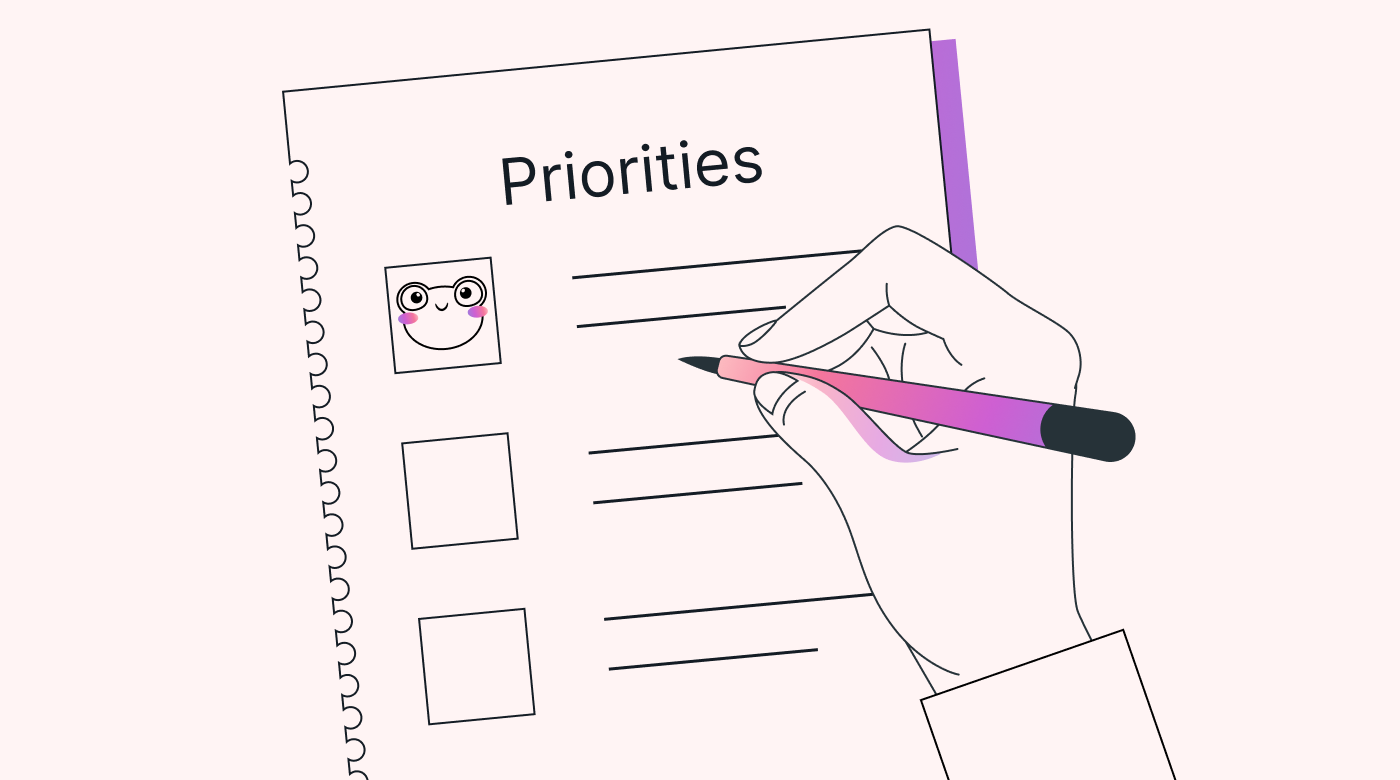 |
The first thing on that list — customer research — is now your new frog.
Step 3: Move on to other tasks
Congratulations! You’ve taken the plunge and eaten the frog. Now it’s time to move on to the rest of your tasks for the day. And you’ll be surprised at how eating the biggest and most annoying (but urgent) frog puts you on a path to happily accomplish less important or urgent tasks.
Suddenly, you’re on a roll! Use that momentum to knock out that to-do list!
Perhaps that means starting on your second frog. Or maybe it means finally responding to emails or filing reports. Whatever it is, you can now rest easy knowing you’ve taken care of your hardest task of the day.
Hopefully, the rest of your day will be easier now that you’ve eaten the frog.
Pros and cons of “eating the frog” for small business owners
Like all time management strategies and techniques, “eating the frog” isn’t perfect for everyone. It can be incredibly useful, but those who work in a fast-paced environment where priorities constantly change may find it too rigid.
Compared to other productivity methods, it’s also not a complete system in itself as much as it is a principle. As we saw above, you’ll still need the Eisenhower matrix to make determinations about importance, priority and urgency.
Nonetheless, it’s worth trying out for yourself.
Here’s a list of pros and cons to help you decide whether the “eat the frog” methodology is right for you:
Pros
- It helps you prioritize your tasks so you always do the most important ones first when you’re at the peak of your productivity. This can lead to more instances of what Cal Newport calls “deep work” — when your focus on your work is so sustained that time flies by.
- It helps you see the bigger picture. Doing tasks without knowing what they’re leading to might feel meaningless. But if you can identify a goal that you’re passionate about, all the tasks required to achieve it suddenly make sense. Also, employees are more engaged when they find purpose and meaning in their work, which often leads to increased productivity.
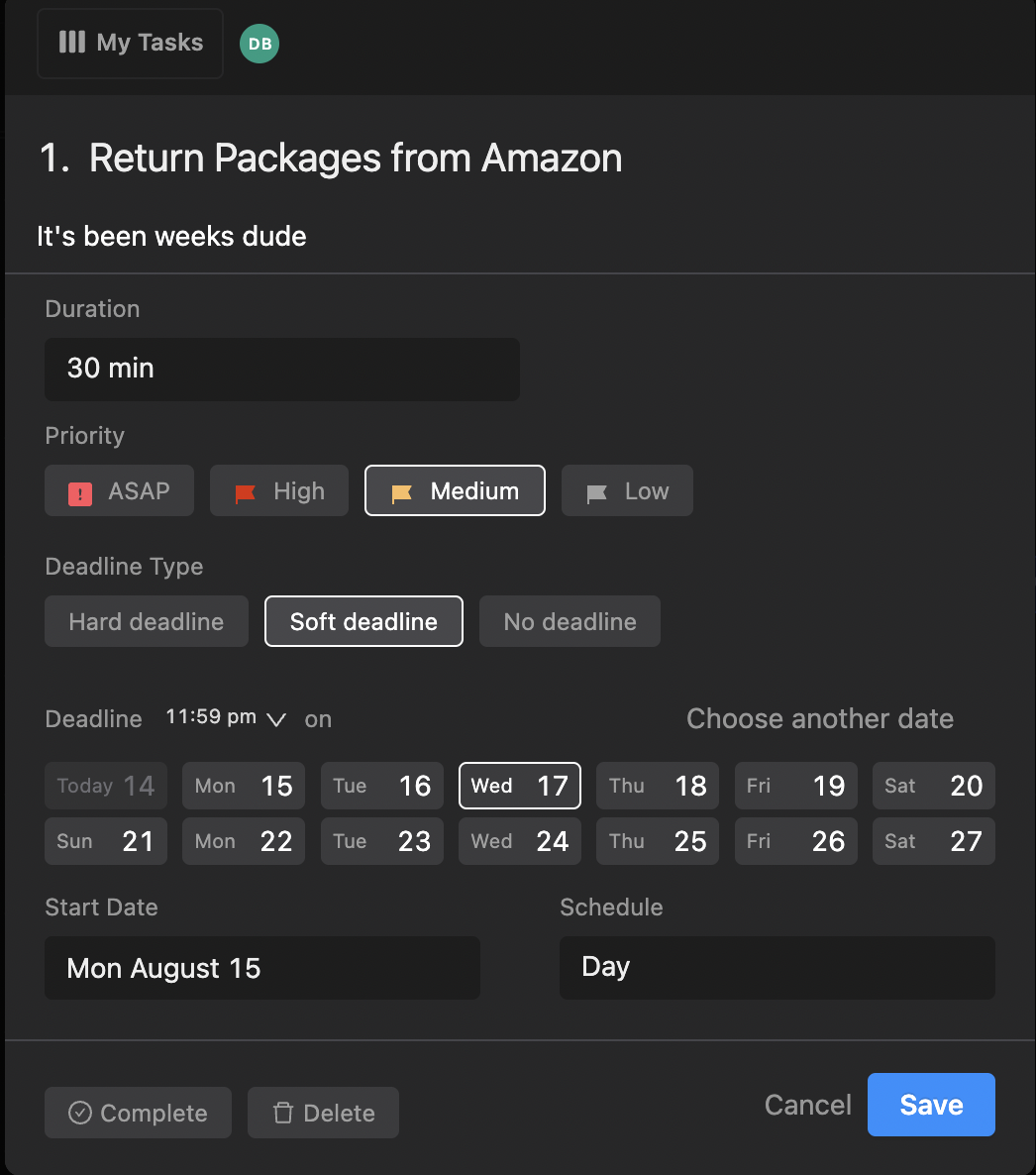 |
- It helps you manage your time better. It feels good to get the most difficult task out of the way, and it also makes your other tasks easier to handle, especially as your energy level decreases.
- It helps you take advantage of your (and your team’s) best working hours. Schedule important work when your team’s at their best, and let them take care of their emails and other low-value tasks when they’re not as sharp. An efficient team equals a profitable business and a better work-life balance for both you and your employees.
Cons
- It doesn’t work for everyone, especially for people who have anxiety or are neurodivergent. For example, people with ADHD often find it hard to focus. Therefore, starting with the biggest task of the day could end up being daunting instead of motivating. For people who have trouble focusing, ADDitude Magazine recommends starting with easier tasks first before warming up to more demanding tasks.
- It doesn’t account for the ever-changing nature of our fast-paced lives. Life is unpredictable, and sometimes, new things crop up that can’t be ignored. When this happens, you have to deal with it first, and by the time you’re done, you no longer have the energy to eat the frog. This is especially true for client-facing employees.
- Sometimes your frogs are tasks you have no control over. For example, an agency might have to deal with its biggest client right away and they also happen to be incredibly demanding. This client’s projects pay most of the agency’s bills, so those projects end up being the frog. But this client is very particular about how things are done, and employees may spend more time than they’d prefer fixing things. And if your frog depends on external circumstances, you might have to do other tasks first.
Tips for eating the frog with Motion
Schedule your frog in Motion’s task manager, and choose your priority. Add a deadline as well, and choose your deadline type.
Motion’s algorithm makes sure you do the most important tasks first. Tasks that take the longest will also be given higher priority because the risk that you’ll miss the deadline is greater. That’s because there’s more variance regarding how long it’ll take to do it.
These tasks will be automatically scheduled in your calendar, and if anything needs to be rearranged, Motion will shuffle things around so you can fit them in within the deadline. Your calendar becomes your daily planner.
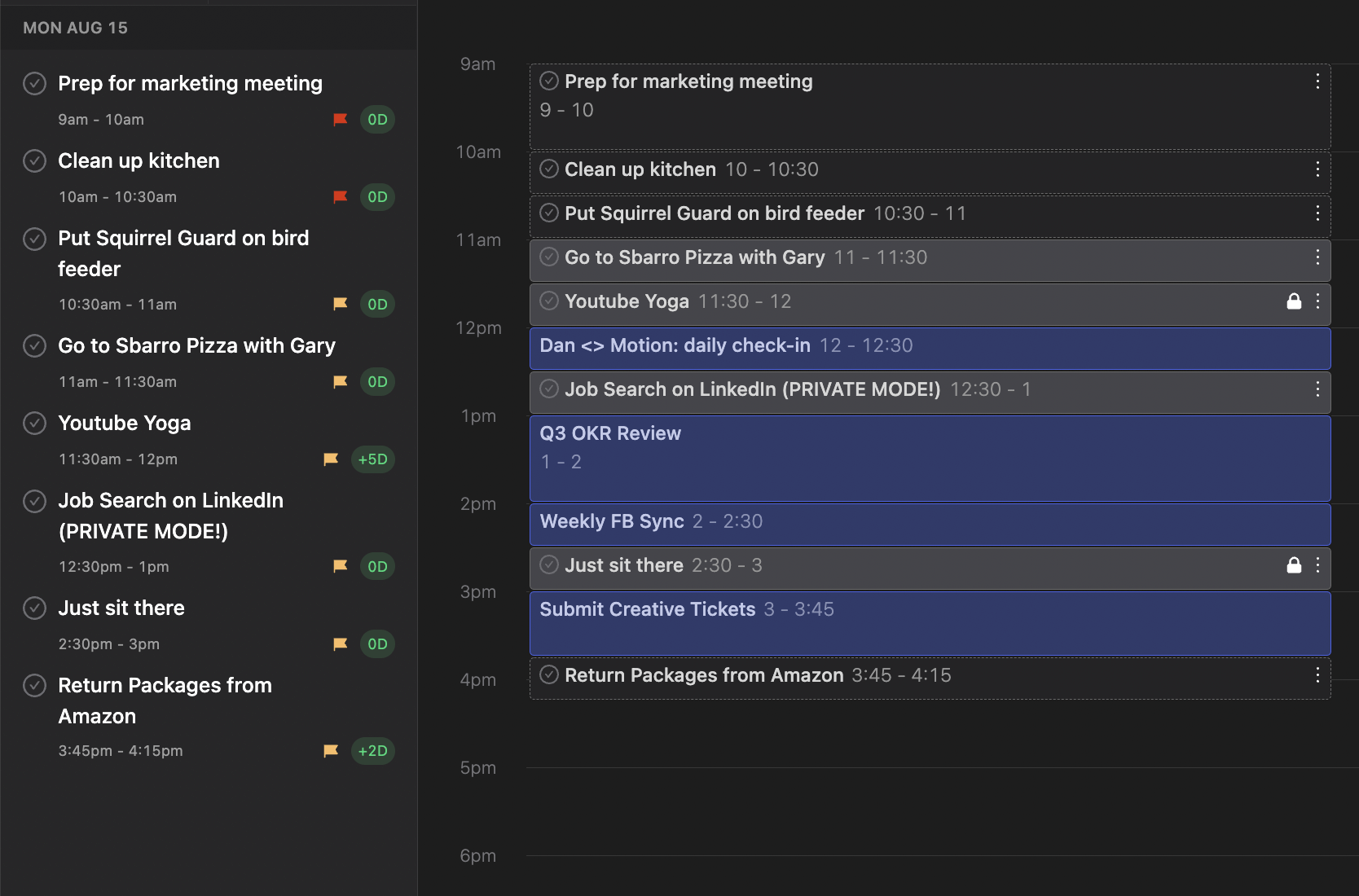 |
You can also see and connect your team’s calendars so you can schedule certain things, like meetings, when everyone’s free. That helps you get the most out of your team in terms of billable hours.
Oh, and since you’re eating the frog, you’re going to need to focus. Get in the zone. Do deep work.
Motion reserves large chunks of time on your calendar specifically for this. We’ll even block out distractions for you with a small banner on your screen reminding you to focus.
Eat the frog with Motion
It might sound unappealing, but the “eat the frog” technique can help you take the first step toward achieving your goals.
No more staring at to-do lists with dread. No more procrastinating. No more stress and anxiety. No more missed deadlines.
It’s even easier to eat your frogs with Motion. With its automatic scheduling, task prioritization, and time-guarding abilities, you’ll be hitting deadlines in no time at all and saving over two hours each day!





